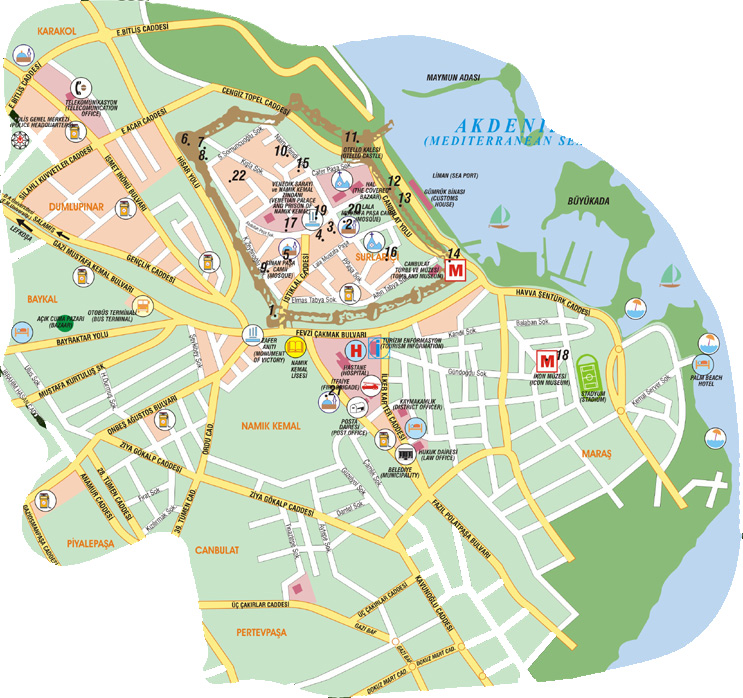


North Cyprus is a place full of magic: fully deserving the title of “Pearl of the Mediterranean". It is a rich and colorful tapestry of unspoiled beauty, ranging from sparkling clear waters and golden beaches to fields carpeted by wildflowers in the Spring and the pine-clad heights of the Besparmak Mountains. Cyprus is the third largest island in the Mediterranean, 65km south of Turkey, 100km west of Syria, and 420km north of Egypt.
In 1974, following years of violence between the Turkish and Greek Cypriot Communities and an attempted coup d'état by the Greek Cypriot Nationalists, Turkey intervened to save the Turkish Cypriots from genocide and have remained since to maintain the peace. The island remains divided today into two autonomous States. Greek Cypriots are situated in the Southern part of Cyprus and the Turkish Cypriots in the Northern part. The two states are separated by a “Green Line" which also divides the capital Nicosia, making it the last divided capital in the World. Despite the trouble between the two communities in the past, there is now peace on the island with the leaders of both States meet regularly, under the careful eye of the United Nations, to try and negotiate a settlement deal that will reunite the island.
There are five main regions in North Cyprus: Lefkosa (or Nicosia), Gazimağusa (or Famagusta), Girne (or Kyrenia), Guzelyurt (or Morphou), Iskele (or Trikomo). There are currently five border crossings, allowing passage to and from south Cyprus, offering 24-hour unrestricted access to EU citizens. However, a short visa form (available at the checkpoints and free of charge) will need to be completed when crossing north with an identity card or passport.
There are currently five border crossings, allowing passage to and from south Cyprus, offering 24-hour unrestricted access to EU citizens. However, a short visa form (available at the checkpoints and free of charge) will need to be completed when crossing north with an identity card or passport.
Cyprus has a very warm climate and generally, the Summer season lasts for about eight months from April to the end of November. In July and August, temperatures exceed 35°C (95°F). The Winter weather is generally very mild and the average annual temperature is 19°C (66°F).
Eating out is extremely popular amongst the locals and there is a wide range of international restaurants in and around the major cities.

Famagusta City Map: 
Once upon a time, Famagusta was the most important port city on the island. The naturally deep harbor attracted ships, merchants, and traders from all over the eastern Mediterranean and further. It was during this time that the region began to flourish with wealth, and the idea that wealth could be measured by the churches they built inspired these rich merchants to build a multitude of them. Famagusta came to be known as "the district of churches" – legend has it that at one time the area had a church for every day of the year.
Today the area boasts some of the most impressive medieval ruins anywhere in the world. The contrasting Lala Mustafa Pasha Mosque is fascinating for its gothic cathedral exterior as it was once a church, which has since been transformed into a mosque on the inside. A walk through the walled city offers wonderful insight into the history of the area, like a crumbling postcard to the past.
Salamis is home to some fantastically preserved Roman ruins, including statues, standing columns, theatre, and baths. But, of course, the area is as famous for its spectacular beaches as its rich history so there is something for everyone.


